12 Star-Shaped Flowers | Blooming Stars for Every Garden

This post follows our research editorial guidelines.

Are you looking for a way to add unique style and color to your garden? Look no further than the 12 star-shaped flowers that bring life and vibrancy to any outdoor space. These flowers delivered beauty and fragrance, from tulips and daisies to petunias and poppies.

Quickly Find The Star Shaped Flower You’re looking for:
You can create an inviting and picturesque atmosphere with the right combination of colors and species. You can choose star-shaped flowers for a low-maintenance option or something more extravagant.
Star-shaped flowers provide a natural, organic element to any garden.
You can choose star-shaped flowers for a low-maintenance option or something more extravagant.
1. Golden Star (Chrysogonum virginianum)
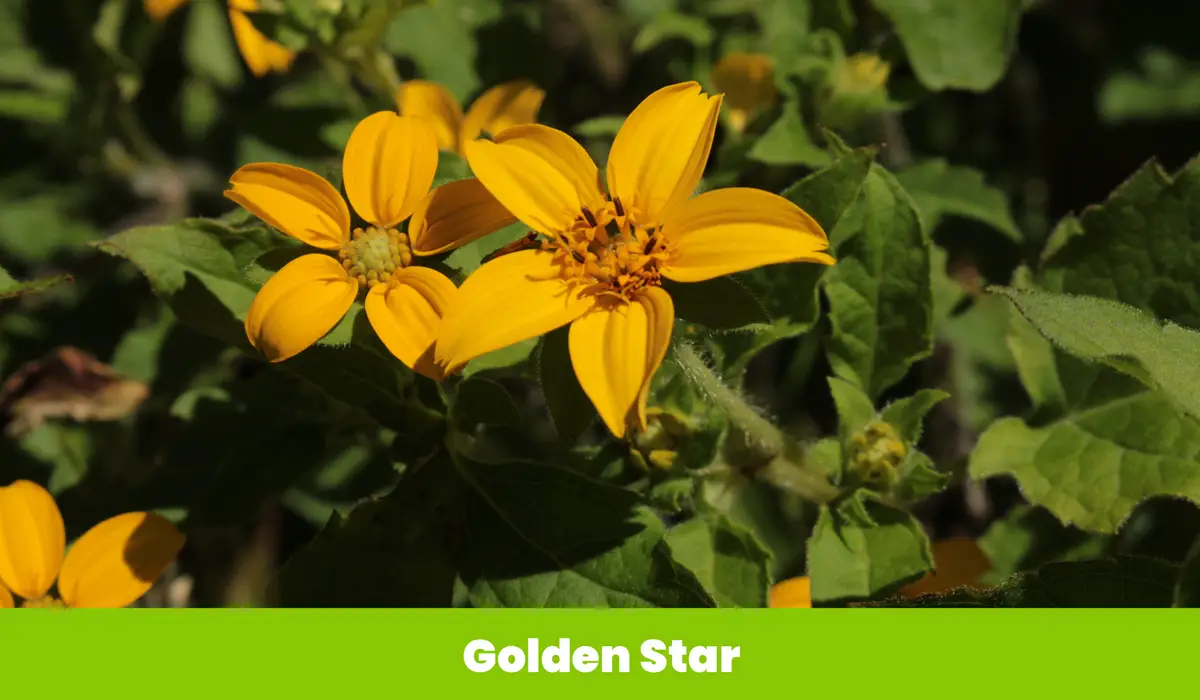
The Golden Star is a beautiful star-shaped flower that can bring a vibrant golden hue to your garden. This flower has long-lasting blooms that last up to 8 weeks before fading away. Its petals are deep yellow and slightly fringed at the edges.
Plant Pairing Pro Tip
In a sea of green ground covers, The Golden Star can add a pop of color. It’s the ideal flower to grow when you’re looking for quick coverage. Try planting at the front of borders or around large trees and shrubs.
This plant will stand out in any outdoor space with its large yellow blooms. This type of flower thrives in full sun and well-drained soil.
| Scientific Name: | Calochortus monophyllus |
| Bloom Time: | Spring–Summer |
| Water Requirements: | Moderate Water |
| Native Habitat: | North America |
| Growth Rate: | Slow to medium |
| Size: | 14-22 inches (36-56 cm), depending on the species |
| Exposure: | Full sunlight for vibrant color |
| Soil pH: | Acidic |
| Soil Structure: | Rich in organic material |
2. White Star (Lilium Candidum)
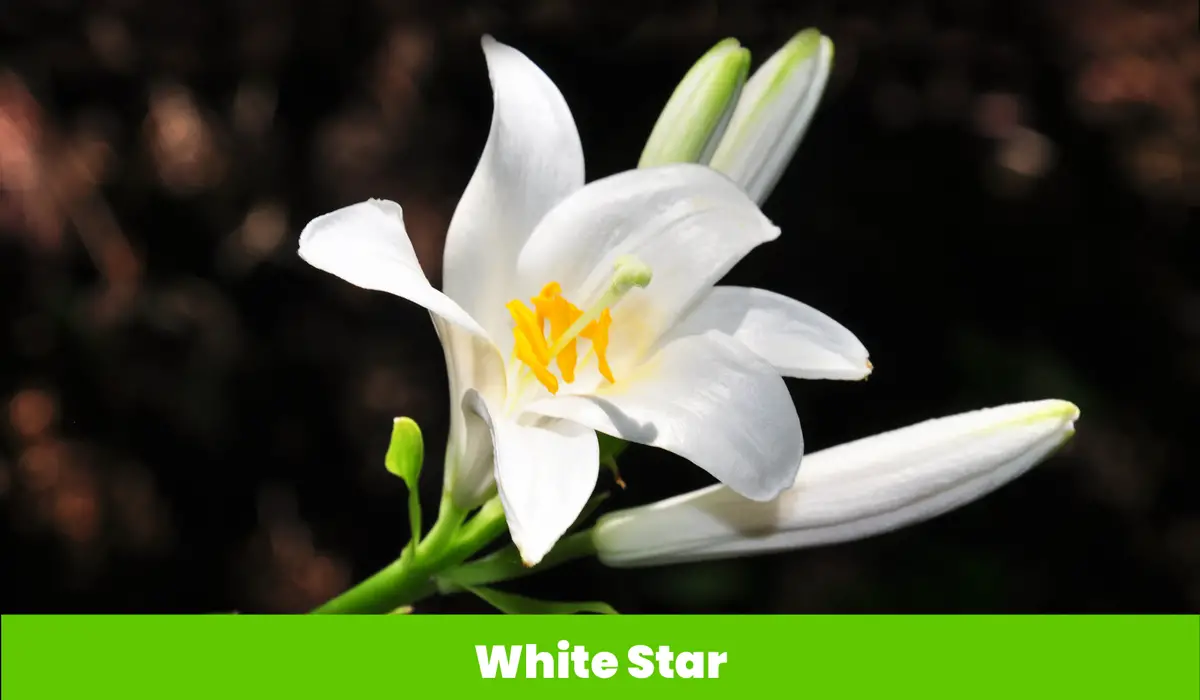
White Star is a stunning star-shaped flower that brings elegance and beauty to any garden. This type of flower features soft white petals contrasting beautifully against its bright yellow center. It requires moderate watering and full sun for the best blooms.
The White Star can be planted in early spring for the most vibrant flowers, and with proper is a stunning star-shaped flower that will bring an elegant and classic look to your garden. White star-shaped blooms are a must for any country garden.
“Flowers always make people better, happier, and more helpful; they are sunshine, food, and medicine for the soul,”
Luther Burbank
Jasmine and starflower exemplify the beauty of the flowers, bringing back memories of childhood innocence; they evoke joyful feelings that will linger in our hearts forever.
| Scientific Name: | Lilium Candidum |
| Bloom Time: | Summer–Fall |
| Water Requirements: | Moderate Water |
| Native Habitat: | Tropical and subtropical regions of Europe, Asia, Australia, and Oceania |
| Growth Rate: | Fast growth rate |
| Size: | 2-3 Feet (90 cm) tall |
| Exposure: | Part shade for optimal blooms |
| Soil pH: | Neutral |
| Soil Structure: | Rich in organic material |
Are there any Flowers with the Name “Star”
While there are no flowers with the stand-alone name “Star” there are many flowers including the ones on this list that contain the word star in the commonly used botanical name. For example, the Egyptian star Flower or Shooting Star.
3. Shooting Star (Primula meadia)

Shooting Star is a magnificent star-shaped flower that will sparkle your garden. With its unique star-shaped blooms, this flower can bring an elegant touch to any outdoor space. These perennial herbs have wavy-edged leaves in a rosette formation.
At the top of their leafless scape lies the flower cluster with blossoms ranging from pink to white and red to purple hues. The five petals are bent backward while pointing downward, and these blooms thrive when buzz pollinated by bees vibrating at a specific frequency for pollen release.
| Scientific Name: | Primula meadia |
| Bloom Time: | Spring–Summer |
| Water Requirements: | Moderate Water |
| Native Habitat: | North America, Russia, and Canada |
| Growth Rate: | Slow to medium |
| Size: | 12-18 Inches (30-45 cm) tall, depending on the species |
| Exposure: | Full sun for best results |
| Soil pH: | Neutral to slightly acidic |
| Soil Structure: | Rich in organic material |
4.Blue Star (Amsonia Tabernaemontana)
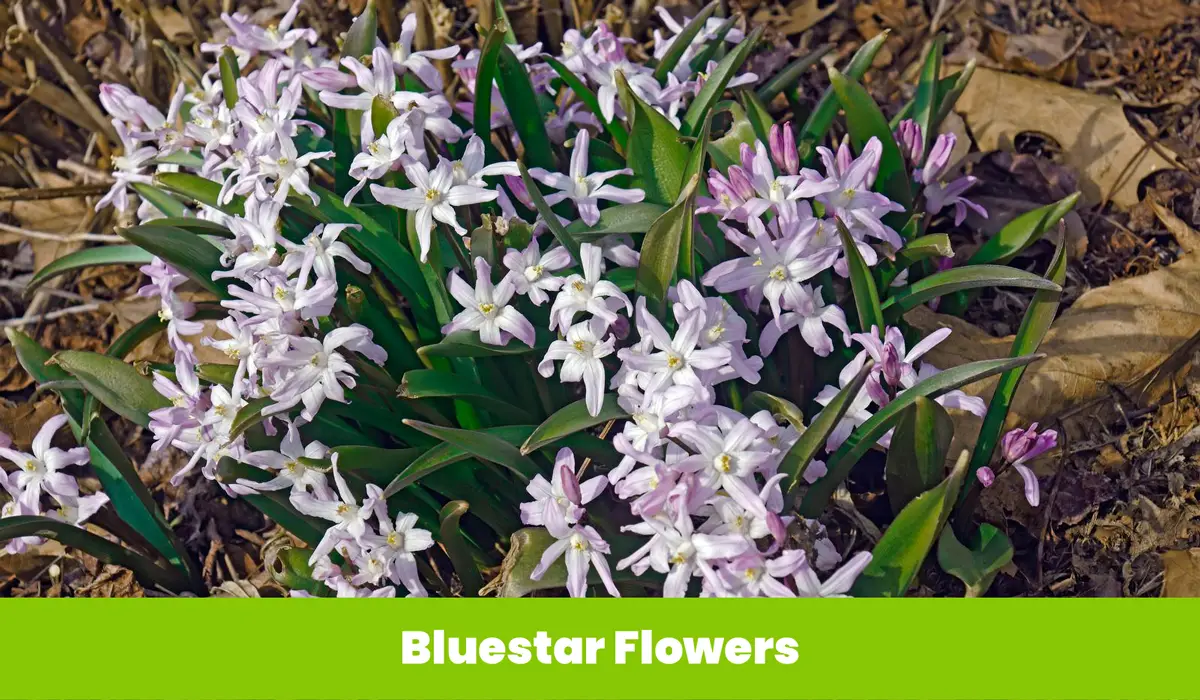
Amsonia, more commonly known as blue star, is a beautiful flowering plant with delicate stars of an enchanting baby-blue hue. These dainty flowers form soft and fluffy clusters that can put on quite the show for weeks.
This flower thrives in full sun and grows best with moderate water. The blue star is a low-maintenance, drought-tolerant plant that is perfect for a beginner gardener.
| Scientific Name: | Amsonia Tabernaemontana |
| Bloom Time: | Spring–Summer |
| Water Requirements: | Moderate Water |
| Native Habitat: | North America |
| Growth Rate: | Slow to medium |
| Size: | 20-36 Inches (50-90 cm), depending on the species |
| Exposure: | Full sun or Partial shade |
| Water: | Neutral |
| Soil: | Rich in organic material |
5. Star Magnolia (Magnolia stellata)
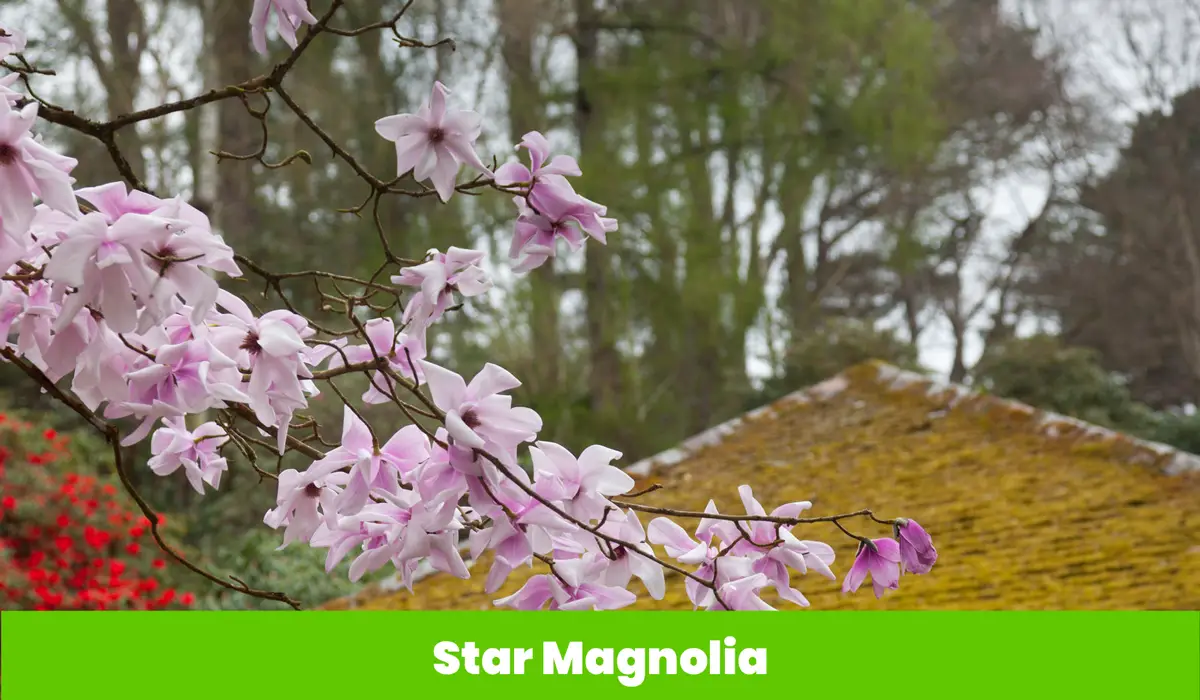
The star magnolia is a delicate deciduous tree that grows slowly and blooms in spring. It can reach up to 15-20 feet tall once fully mature while having an even smaller spread.
It has large white flowers with a strong central yellow eye that opens up in late winter or early spring and is incredibly fragrant. The star magnolia is best grown in USDA zones 4-7 and does well with plenty of sun and some protection from cold winds.
“The star magnolia is a fantastic choice for gardeners looking to add beauty and fragrance to their landscape,” says horticulturist Lucy Smith. “It’s an eye-catching tree with an irresistible scent, and its star-shaped blooms will make your garden look like a magical place.”
To ensure the most success when planting this ornamental beauty, it’s best to plant the star magnolia during fall/winter if you live in warmer climates; however, colder areas should consider planting in early spring for optimal growth.
| Scientific Name: | Magnolia stellata |
| Bloom Time: | Early Spring |
| Water Requirements: | Moderate Water |
| Native Habitat: | Japan, Korea, and China |
| Growth Rate: | Slow |
| Size: | 15-20 Feet (4.5-6 m) tall |
| Exposure: | Full sunlight for vibrant color |
| Soil pH: | Acidic |
| Soil Structure: | Rich in organic material |
6. Egyptian Star Flower (Pentas lanceolata)

The Egyptian Star Flower is a stunning annual that loves to bask in the sun. This plant is hardy and a show-stopper, boasting clusters of star-shaped blooms in vibrant shades of pink, red, and purple on top of its glossy green foliage.
Perfect for garden beds or container gardens, this flower will thrive in a warm climate and bloom all summer.
| Scientific Name: | Pentas lanceolata |
| Bloom Time: | Spring–Fall |
| Water Requirements: | Moderate Water |
| Native Habitat: | Tropical Africa |
| Growth Rate: | Slow growth rate |
| Size: | 1-2 Feet (60 cm) tall |
| Exposure: | Full sun for best results |
| Soil pH: | Neutral |
| Soil Structure: | Rich in organic material |
7. Star of Bethlehem (Ornithogalum umbellatum)
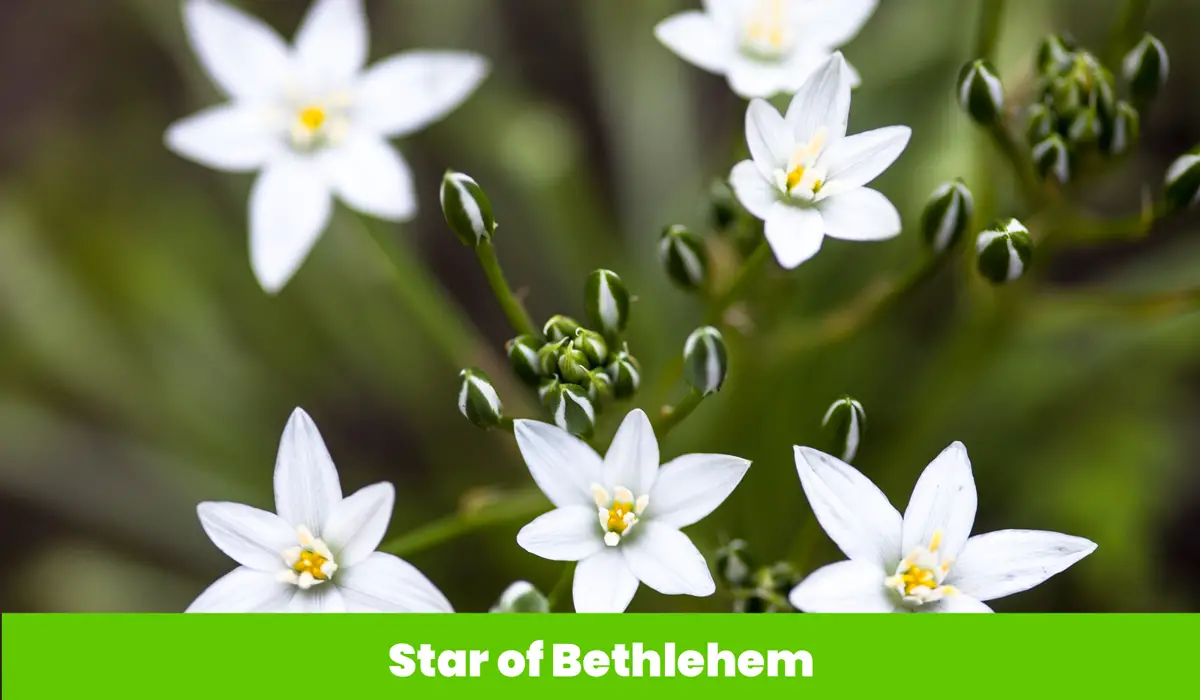
Star of Bethlehem, also known as Ornithogalum umbellatum, is a stunning perennial flower that can add elegance and serenity to any garden.
It features clusters of delicate star-shaped white blooms with striking yellow centers that open up during the day and close when the sun sets. These flowers thrive in warm, sunny climates and prefer to be planted in well-drained soil.
| Scientific Name: | Ornithogalum umbellatum |
| Bloom Time: | Spring–Summer |
| Water Requirements: | Low Water |
| Native Habitat: | Europe and North Africa |
| Growth Rate: | Slow to medium |
| Size: | 6-12 Inches (15-30 cm) tall, depending on the species |
| Exposure: | Full sun or Partial shade |
| Soil pH: | Neutral |
| Soil Structure: | Well-drained soil |
8. Star Tulip (Tulipa Sylvestris)

Star Tulip is a highly versatile flower that can liven up any garden. An ornamental perennial, this plant produces an array of star-shaped blooms in shades of white, pink, yellow, and red that are sure to draw the eye. It prefers well-drained soil and should be planted in full sun or partial shade.
| Scientific Name: | Tulipa Sylvestris |
| Bloom Time: | Northern Europe and the Pacific Northwest |
| Water Requirements: | Low Water |
| Native Habitat: | Northern Europe and Pacific Northwest |
| Growth Rate: | Slow to medium |
| Size: | 4-12 inches (10-30cm) tall, depending on the species |
| Exposure: | Full sun or partial sun |
| Soil pH: | Mildly alkaline |
| Soil Structure: | Well-drained soil |
9. Star Jasmine (Trachelospermum Jasminoides)
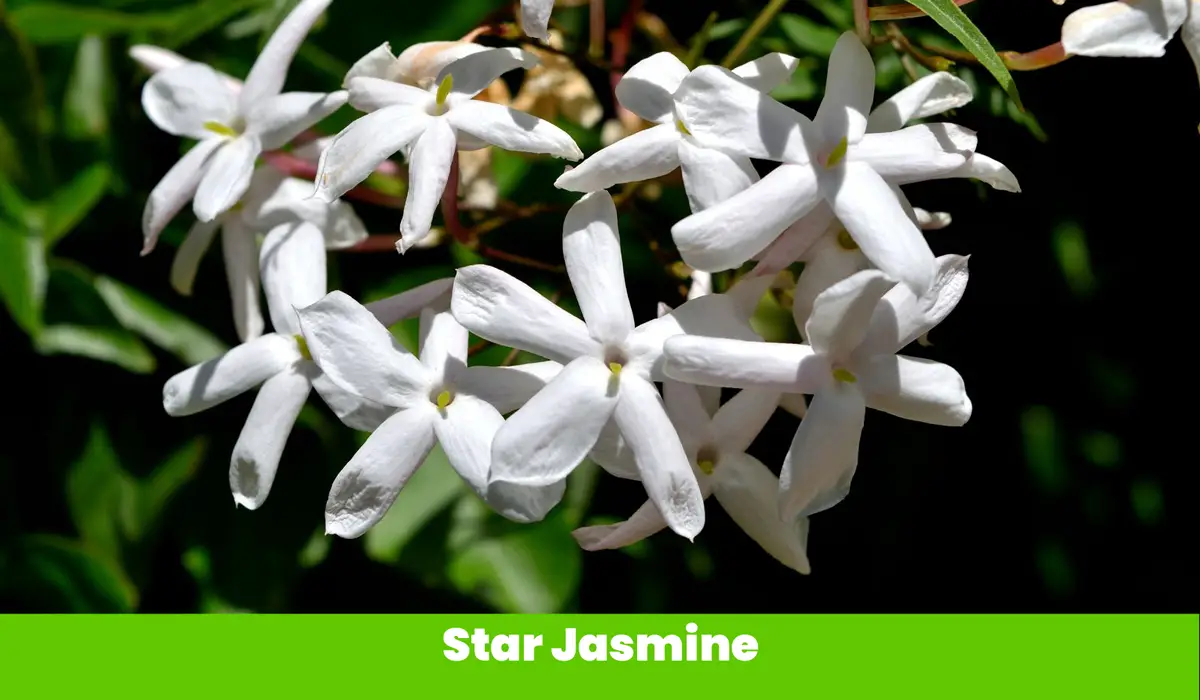
Star Jasmine is a hardy evergreen vine that produces clusters of fragrant white star-shaped blooms throughout the year. It can be grown as an ornamental ground cover or trained to climb up walls and trellises.
The star jasmine truly shines in comparison to other flowers. Its white clusters of star-shaped blooms are beautiful against the lush green vines, making it a captivating sight.
| Scientific Name: | Trachelospermum Jasminoides |
| Bloom Time: | Spring to Fall |
| Water Requirements: | Moderate Water |
| Native Habitat: | East Asia |
| Growth Rate: | Fast growth rate |
| Size: | 6-20 Feet (1.5-6 m) tall, depending on the species |
| Exposure: | Full sun or Partial shade |
| Soil pH: | Neutral |
| Soil Structure: | Well-drained soil |
10. Olivia (Hybrid of St. John’s Wort)
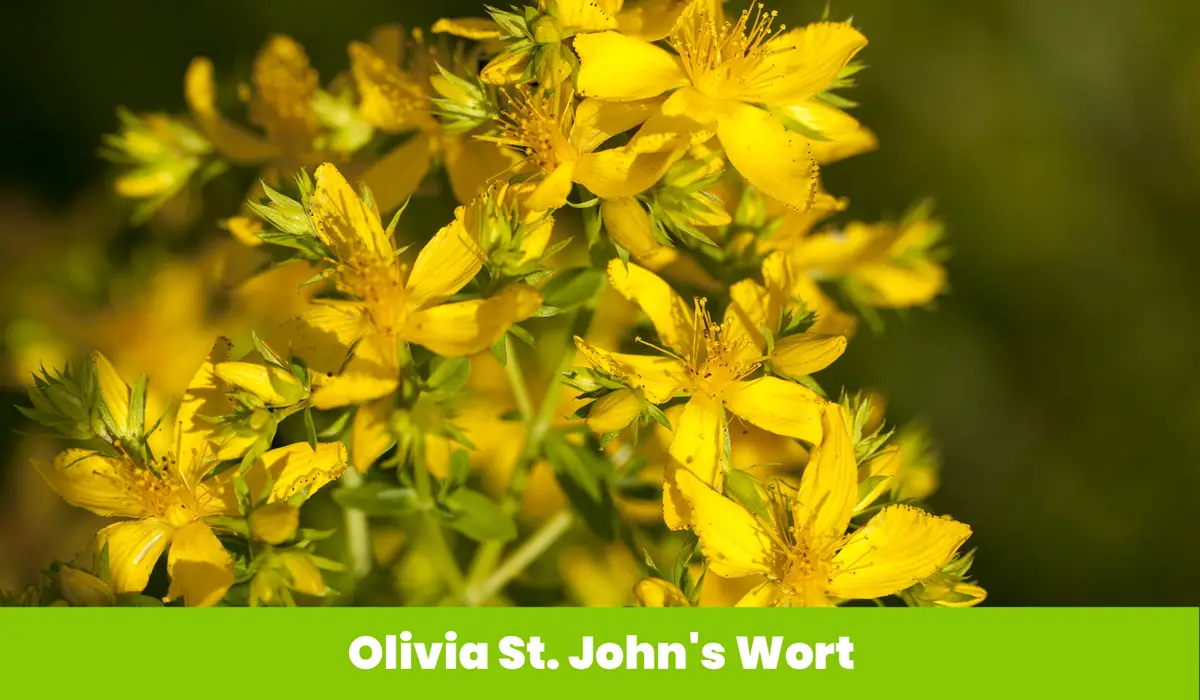
Olivia is a stunning, fast-growing perennial that consists of star-shaped pink blooms. It is a hybrid variety of St John’s Wort and thrives best in full sun or partial shade with well-drained soil. With regular watering and fertilizing, it will bloom from late spring to mid-fall.
| Scientific Name: | Hypericum Hypearls’ Olivia’ |
| Bloom Time: | Late Spring–Mid-Fall |
| Water Requirements: | Low Water |
| Native Habitat: | Hybrid of St John’s Wort |
| Growth Rate: | Medium growth rate |
| Size: | 31-35 Inches (80-90 cm) tall |
| Exposure: | Full sun or Partial shade |
| Soil pH: | Neutral |
| Soil Structure: | Well-drained soil |
11. Spring Starflower (Ipheion Uniflorum)
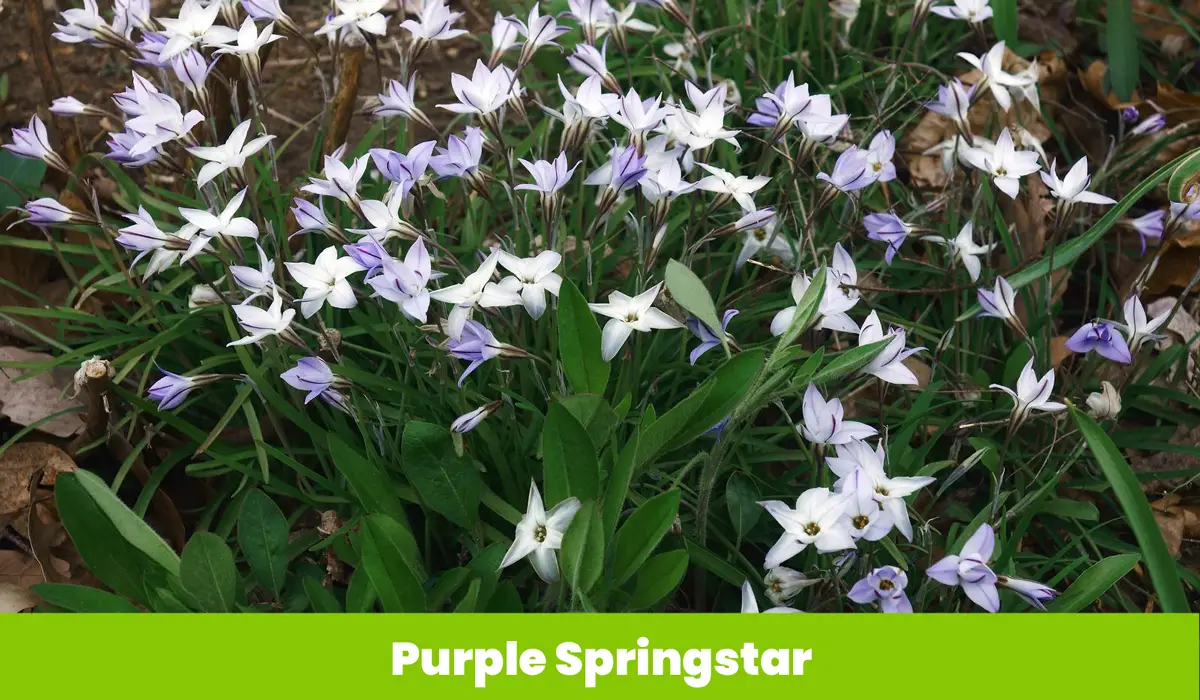
Spring Starflower is a stunning spring flowering bulb with star-shaped white blooms and bright yellow centers. It grows very well in full sun or partial shade and needs plenty of water during the growing season.
My Recommendation
Try planting the Purple Sping Star among other spring-blooming bulbs like Crocuses, Snowdrops, and early Daffodils to complement the Starflower’s bloom time and create a
To ensure optimal growth, it should be planted in well-drained soil with a water-soluble fertilizer once or twice a month.
| Scientific Name: | Ipheion Uniflorum |
| Bloom Time: | Early Spring |
| Water Requirements: | Moderate Water |
| Native Habitat: | Argentina |
| Growth Rate: | Medium growth rate |
| Size: | 4-10 Inches (10-25 cm) tall |
| Exposure: | Full sun or Partial shade |
| Soil pH: | Mildly acidic |
| Soil Structure: | Well-drained soil |
12. Elk Hunter’s Star (Amsonia Tabernaemontana)
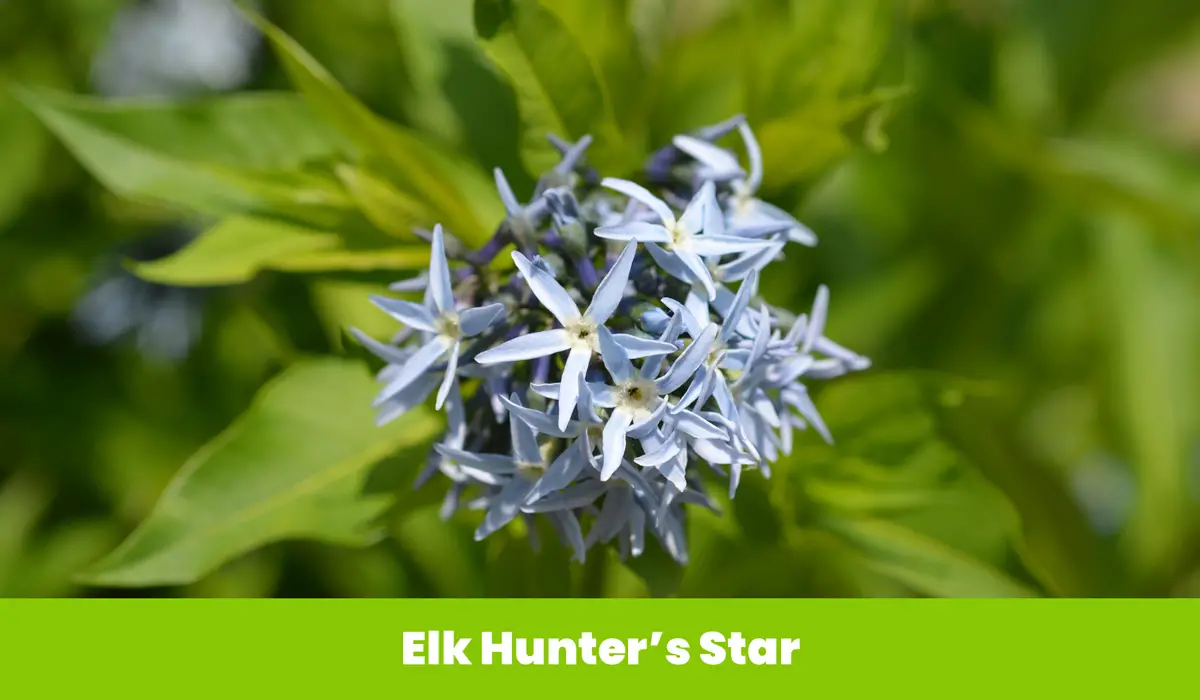
Elk Hunter’s Star is an exceptionally beautiful perennial offering deep blue star-shaped blooms. It prefers full sun or partial shade, with well-drained soil, and should be watered whenever the soil begins to dry out.
It requires fertilizing once a month with a water-soluble fertilizer to ensure optimal growth.
| Scientific Name: | Amsonia Tabernaemontana |
| Bloom Time: | Late Spring–Early Summer |
| Water Requirements: | Low water |
| Native Habitat: | Eastern and Central USA |
| Growth Rate: | Medium growth rate |
| Size: | 18-24 inches (46-60 cm) tall |
| Exposure: | Full sun or Partial shade for best blooms |
| Soil pH: | Neutral |
| Soil Structure: | Well-drained soil |
Final Thoughts
Well, I hope you found some star-shaped inspiration from the flowers I’ve shared with you.
With such a variety of colors, sizes, and blooming times, you can find something for every part of your garden all season long.



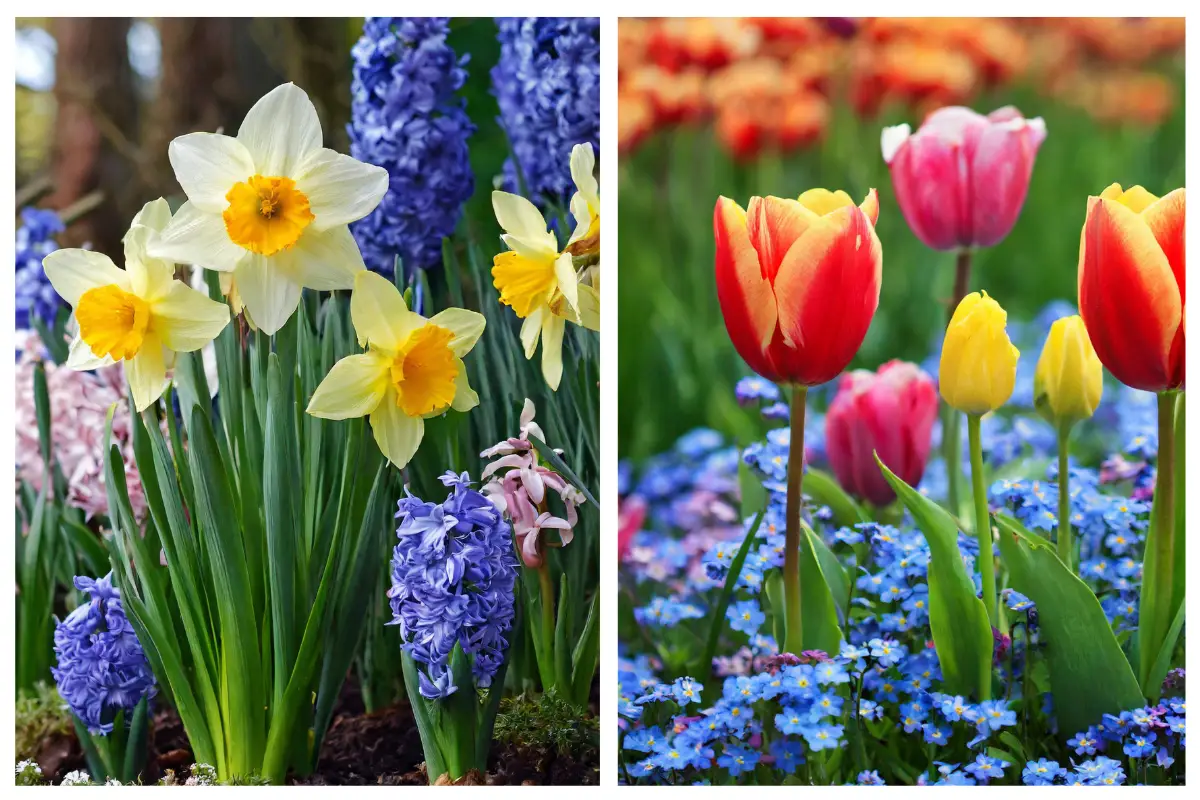

Having read this I thought it was extremely informative. I appreciate you taking the time and effort to put this short article together. I once again find myself personally spending way too much time both reading and commenting. But so what, it was still worth it!
Thank you for the kind words Kip!